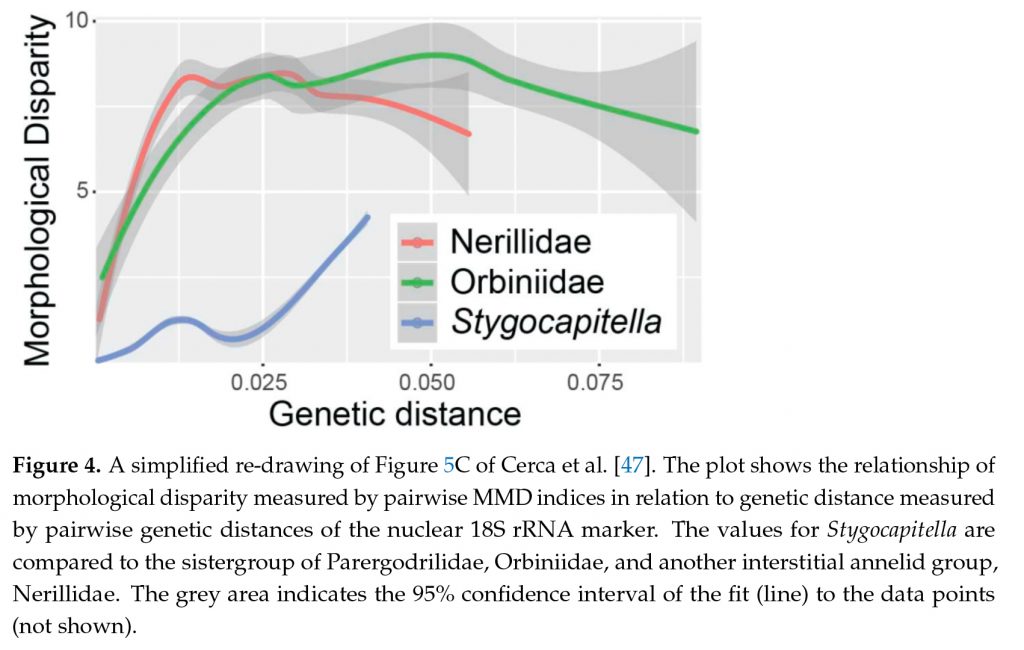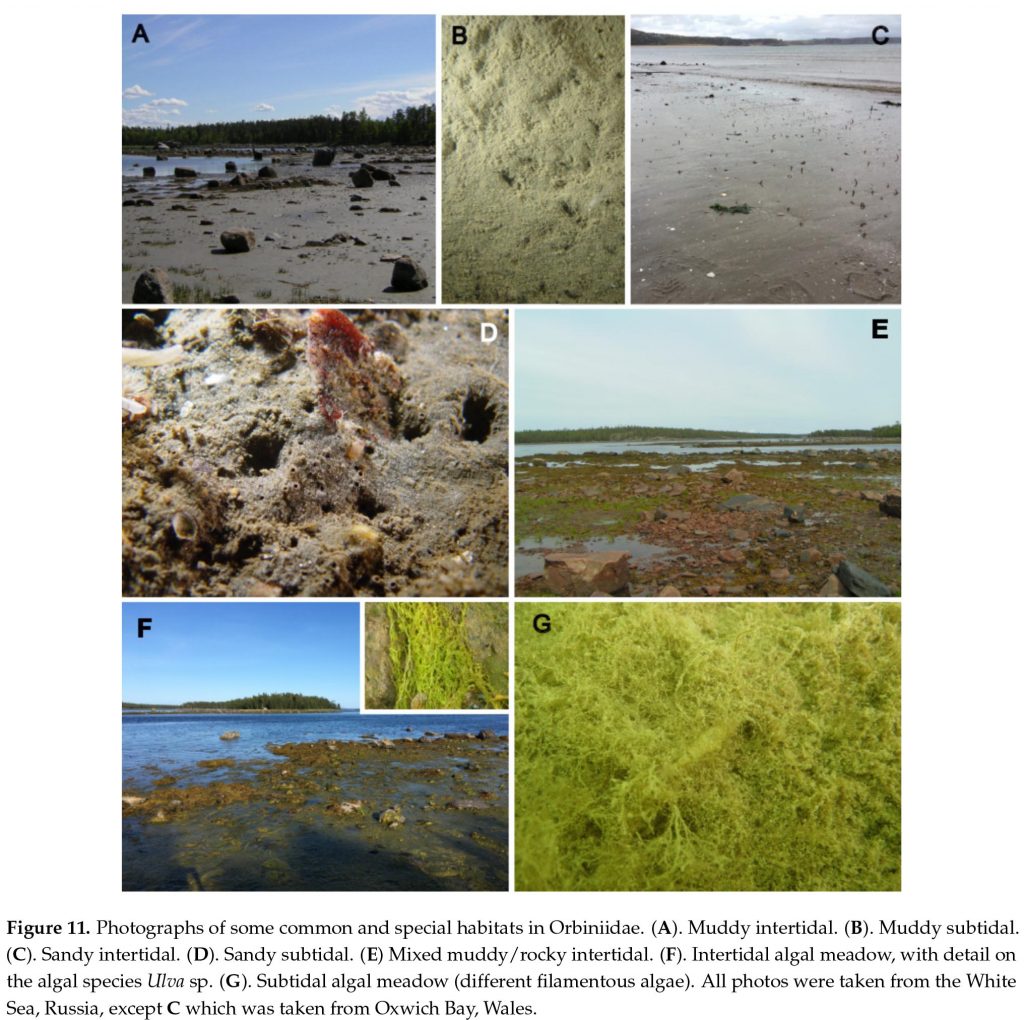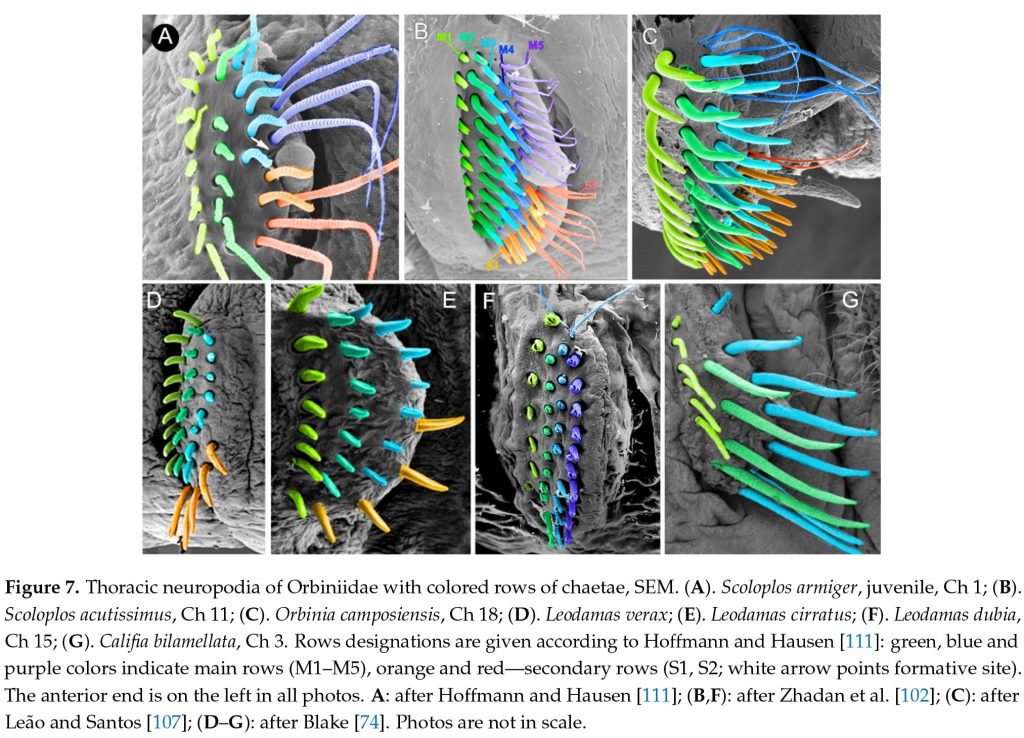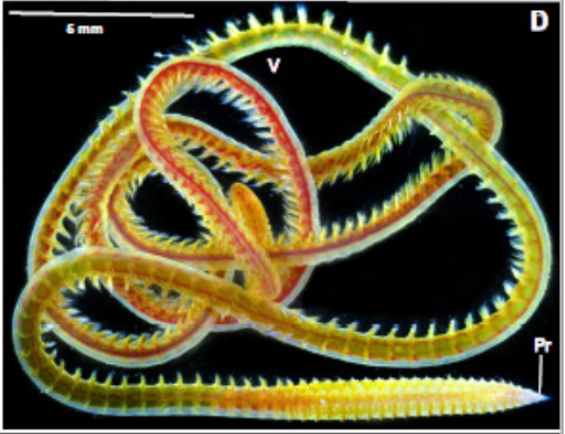This week a member of our group, Torsten Struck, published a review paper on the two annelid families Parergodrilidae and Orbiniidae together with Miguel Meca from the University Museum of Bergen as the first author and Anna Zhadan from the Lomonosov Moscow State University in the journal Diversity.

Parergodrilids occur in the leaf litter of birch forest all around the Northern hemisphere or at beaches around the world. They are small worms and live between the sand grains or the decomposing litter. While for a long time there were only consider 2 species in this family, molecular data showed that there are much more species, which just look identical. Hence, these species are ideal systems to study the evolution of cryptic species.

It gets even more interesting. These cryptic species of the genus Stygocapitella have changed very little for tens of millions of years. The figure above shows the morphological difference of some other groups as well as of Stygocapitella in relation to genetic distance as a proxy for time. They have substantially less morphological difference than the other ones. Some of the species did change their morphology for more than 140 million years. When these species originated the dinosaurs still walked the earth. The latter ones are gone, these ones are still there and look like they did then. Mmmmh, who was more successful???

Orbiniids (see featured image above) are usually larger, but also some smaller species are known. They occur in mud and sediments from the intertidal zone to the deep sea, where they burrow. The smaller species evolved from larger ancestors by the process of progenesis. This means, juvenile or larval stages of the ancestor became sexually mature and stopped to develop further. Hence, these species resemble the juvenile or larval stages of the closely related larger species. A vertebrate example for a similar process, neoteny, is the axolotl in Mexican lakes.

Also taxonomically the family is very interesting. Only in this century, which is still quite young, has the number of species increased by more than 50%. Besides molecular data and the detection of cryptic species new morphological methods and recognition of new characters has contributed to this. Above shows an example how the exact recognition of the position and type of the chaetae can assist in recognizing species. Highlighting these by color helps to more easily recognize these patterns.
The review contains many more interesting aspects about these two families and nice pictures. No surprise, as it is 31 pages long and based on more than 200 studies on both families.
![]()

2 Comments on “From the forest to the deep sea”